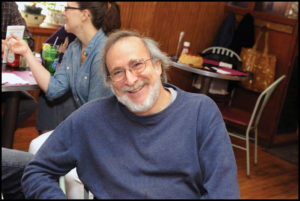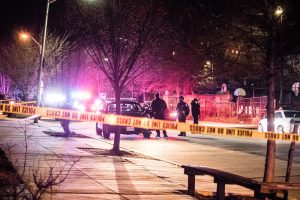Brandon Scott now becomes mayor of Baltimore, which is a mixed blessing at best. In a time of pandemic, his city faces nerve-rattling street crime, crippling budget troubles and a disappearing population, none of which are its main problem.
Baltimore has lost its sense of self.
There was a time when we were a scrappy, unpretentious working-class city, and yet simultaneously the economic, cultural and political hub of the state of Maryland.
Now, to a lot of people — including the political forces in Annapolis — we’re an afterthought.
Brandon Scott is 36 years old. He was born 10 days after the Baltimore Colts football team was stolen one snowy night aboard a fleet of Mayflower moving vans. Gone went the team, and part of the city’s sense of self.
Cities are made of many things, including memory, which becomes part of our common narrative and sense of self.
We’re more than the latest homicide statistics, more than the latest City Hall scandal.
But who are we?
Brandon Scott arrived in a Baltimore bidding goodbye to images of John Unitas and the Colts. It was a city that shared smiles over William Donald Schaefer’s seal pool dip and Hyman Pressman’s poetry and Mimi DiPietro’s latest grammatical miracle. We still nurtured a good-natured Hon culture and poked fun at the classic Upper Chesapeake adenoidal way some of us talked.
We were part of the massive crowds at the annual City Fair, at ethnic festivals and Artscape. Generations worked in the boisterous steel mills and the waterfront and the assembly lines, and passed along workplace tales.
All these things were enduring signals that the center was holding. They were part of our community identity. They told us that our lives overlapped and depended on each other’s good will.
Much of this is gone now, and not only because of our ongoing viral plague.
In his campaign commercials, Scott made much of his rough, impoverished
Park Heights upbringing. He was talking to people who had no knowledge of such a boulevard when it symbolized middle-class striving and productive public schools.
Such a time was so long ago that thousands of young Baltimoreans have no memory of it nor do their immediate elders — not only about Park Heights but countless city neighborhoods.
In 1990, when Scott was 6, the A.S. Abell Foundation put together a committee of civic elders who produced a slick booklet imagining 30 years into the future. It was titled, “2020 Vision: Focusing on Baltimore’s Future.”
Understand, 1990 was a time when the city had plenty of problems. But we had 736,000 people here (vs. roughly 600,000 today), and a promising young mayor named Kurt Schmoke who could turn to a governor named Schaefer when the city needed help, financial or otherwise.
The rookie mayor named Scott will go to Annapolis this winter to plead for financial aid, and he’ll face a governor named Hogan who’s shown ambivalence, at best, toward this city, and a legislature without much Baltimore muscle.
When civic elders wrote their report 30 years ago, they compiled a wish list for distant 2020, which said:
- “Baltimore would be crime-free (because) the drug problem would be solved.” (In fact, the homicide rate continues around 300 a year, driven largely by drug disputes.)
- “In the 2020 Baltimore school system, 100 percent of the students graduate from high school.” (Baltimore public schools’ dropout rate is among the state’s highest, and its standardized test results among the state’s lowest.)
- In 2020, “Children would have hope, a sense of having a future, and a feeling of being in control of their lives.” (The city’s poverty rate is 18.9 percent. The poverty rate among children is 33 percent.)
The Baltimore of 30 years ago had its problems, as does the city today. But it also had its joys, its buoyant public characters, and its sense of self as a major league community.
As Brandon Scott takes office now, he beholds a city hungry to find new reasons for joy and a new sense of who we are, and where we’re going.

A former Baltimore Sun columnist and WJZ-TV commentator, Michael Olesker is the author of six books. His most recent, “Front Stoops in the Fifties: Baltimore Legends Come of Age,” was reissued in paperback by the Johns Hopkins University Press.





